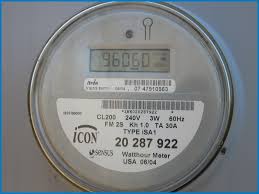A utility meter is a device that measures the consumption of electricity, gas and water. Utility meters are also called energy meters or consumption meters. They measure the amount of electricity, gas or water consumed by the household. Utility meters are used to monitor and record the amount of energy consumed by customers in order to charge them accordingly for their usage over a period of time.
There are many different types of utilities metering systems. Some utilities allow you to reset your utility meter every day or weekly, while others require daily resets. Utility metering systems use a unique ID to identify the utility meter. Resets can be set to occur daily, weekly, monthly, quarterly, or yearly. Utility metering systems may also reset at the start of each period. Some utilities even allow you to offset the beginnings of the period, which can be a great feature if you don’t want to do the reset every day or every week.
Submetering
Submeters are a great way to monitor electricity usage and reduce costs. They work in conjunction with software to give end users detailed data about their energy usage. This information allows them to plan their usage, implement conservation projects, and meet government mandates. In addition, they can also participate in green building programs, which reduce the amount of energy consumption in buildings.
As electricity prices continue to rise, some buildings and businesses are pursuing utility metering. For example, Deepdale Gardens in Little Neck, Queens, has 1,396 units and is exploring its options. The development is pursuing NYSERDA incentives and could see a return on investment in four to six years.
Smart meters
Smart meters are an important component of a smart grid. These devices track the amount of power consumed by the consumer and communicate this information to the utility center. In order to make these devices useful, they must collect accurate data and transmit them over a secure network. They should also be able to store this information. Smart meters can also help utilities better manage their network, improve their efficiency and reliability, and increase customer satisfaction.
As more people switch to smart meters, utilities will save money by reducing the costs associated with monitoring their consumers’ energy usage. They will also be able to provide more accurate billing to their consumers. Smart meters can also help reduce emissions and power wastage.
Read Also : What Are Spectrophotometers?
Cost-effectiveness
The cost-effectiveness of utilities metering policies is in dispute. Some utilities argue that allowing customers to run their meters backwards hurts their bottom line, while others argue that customers who generate their own electricity do not pay enough to support the grid. The latter position is supported by some studies.
In many instances, utilities may decide to upgrade their metering systems, but the change in technology is not without risk. Utilities need to choose the right solution. It is essential that utilities evaluate the cost-effectiveness of a new system before making the change.
YAML configuration
Utility meter configuration is the process of tracking your utility usage. The utility meter operates on monthly cycles and stores data on the consumption. It will automatically reset itself every month based on the configured cycle. It will also save the previous reading for billing estimation purposes. The utility meter can be configured to reset itself daily, weekly, monthly, or quarterly.
Utility meter configuration uses a YAML file to specify the metering configuration. It defines the parameters to be read. A YAML file can be edited using a YAML editor. The YAML file can also be checked by using the CLI or the web console.


















